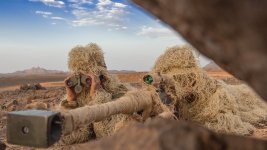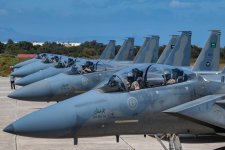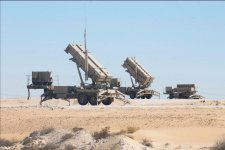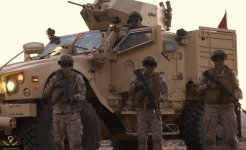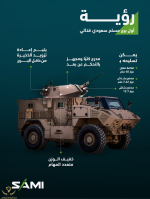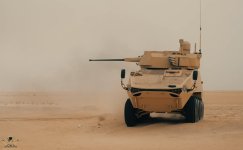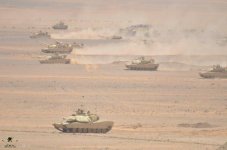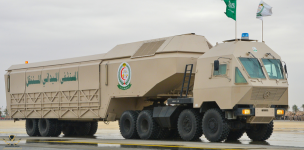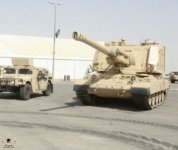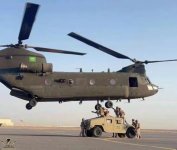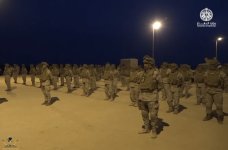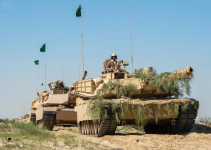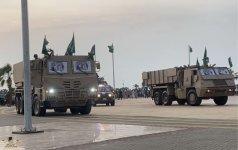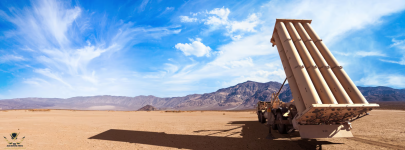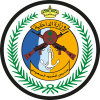Navigation
Install the app
How to install the app on iOS
Follow along with the video below to see how to install our site as a web app on your home screen.
Note: This feature may not be available in some browsers.
More options
Style variation
You are using an out of date browser. It may not display this or other websites correctly.
You should upgrade or use an alternative browser.
You should upgrade or use an alternative browser.
Saudi Arabia Armed forces
- Thread starter The SC
- Start date
The SC
INT'L MOD
- Feb 13, 2012
- 41,465
- 40,619
- Country of Origin

- Country of Residence

- Thread starter
- #217
In a milestone for the military partnership between the United States and the Kingdom of Saudi Arabia: The first batch of Royal Saudi Air Force officers completed an intensive training course on electronic warfare on March 5, 2024, in San Antonio, Texas.
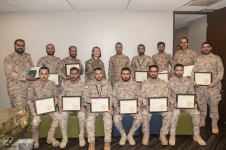
Major General Fahd Al-Jaliham, Deputy Director of Air Force Training at the Royal Saudi Air Force, said: “We are very proud of you, and on behalf of His Royal Highness, Commander of the Saudi Air Force, I congratulate you.”
“We look forward to resuming your duties and mission.”
The 13 Saudi officers received their Electronic Warfare Officer training graduation certificates during a ceremony attended by senior U.S. Air Force and Saudi military leaders.
The course entailed more than three-and-a-half years of training consisting of 4,400 hours of instruction. The entire training program covered four phases, 34 courses, several exercises and simulations. According to Ken Pullen, Air Force contract liaison, these students are among the best trained electronic warfare and cyber experts in the world.
"You are the beneficiaries of a one-of-a-kind training course tailored specifically to support the Royal Saudi Air Force,” said Col. Casey Pombert, U.S. Air Force Security Assistance and Training Squadron commander. “I wish each of you great success and in all your future endeavors."
Electronic warfare involves the strategic use of the electromagnetic spectrum in military conflicts. It encompasses tactics like jamming (electronic countermeasures) to hinder enemy information exchange by overriding radio transmissions or misleading radar detection.
Additionally, eavesdropping (signals intelligence gathering) intercepts enemy communications for intelligence purposes. In response to jamming, electronic protective measures are employed. One common technique is frequency-hopping spread spectrum, where frequency channels rapidly switch based on a predetermined pattern known only to friendly forces.
"Four years of instruction were really required to get your arms around it, and to really become a self-supporting team,” said David Zurn, Georgia Tech Research Institute, Testing Engineering Division chief. “Now your team can do autonomous programming for the Royal Saudi Air Force. That’s a great accomplishment."
https://www.aetc.af.mil/News/Articl...-cohort-of-saudi-electronic-warfare-officers/
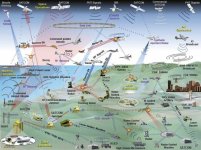

The next class of EW will graduate in fiscal year 2025.
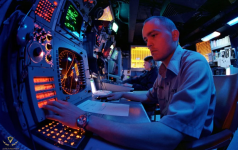
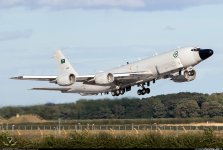

Major General Fahd Al-Jaliham, Deputy Director of Air Force Training at the Royal Saudi Air Force, said: “We are very proud of you, and on behalf of His Royal Highness, Commander of the Saudi Air Force, I congratulate you.”
“We look forward to resuming your duties and mission.”
The 13 Saudi officers received their Electronic Warfare Officer training graduation certificates during a ceremony attended by senior U.S. Air Force and Saudi military leaders.
The course entailed more than three-and-a-half years of training consisting of 4,400 hours of instruction. The entire training program covered four phases, 34 courses, several exercises and simulations. According to Ken Pullen, Air Force contract liaison, these students are among the best trained electronic warfare and cyber experts in the world.
"You are the beneficiaries of a one-of-a-kind training course tailored specifically to support the Royal Saudi Air Force,” said Col. Casey Pombert, U.S. Air Force Security Assistance and Training Squadron commander. “I wish each of you great success and in all your future endeavors."
Electronic warfare involves the strategic use of the electromagnetic spectrum in military conflicts. It encompasses tactics like jamming (electronic countermeasures) to hinder enemy information exchange by overriding radio transmissions or misleading radar detection.
Additionally, eavesdropping (signals intelligence gathering) intercepts enemy communications for intelligence purposes. In response to jamming, electronic protective measures are employed. One common technique is frequency-hopping spread spectrum, where frequency channels rapidly switch based on a predetermined pattern known only to friendly forces.
"Four years of instruction were really required to get your arms around it, and to really become a self-supporting team,” said David Zurn, Georgia Tech Research Institute, Testing Engineering Division chief. “Now your team can do autonomous programming for the Royal Saudi Air Force. That’s a great accomplishment."
https://www.aetc.af.mil/News/Articl...-cohort-of-saudi-electronic-warfare-officers/


The next class of EW will graduate in fiscal year 2025.


The SC
INT'L MOD
- Feb 13, 2012
- 41,465
- 40,619
- Country of Origin

- Country of Residence

- Thread starter
- #218
The WL-10B drone acquired by Riyadh is an export variant of the WL-10 used by the People’s Liberation Army Air Force (PLAAF).

Specifications
General characteristics
Crew: None
Length: 9 m (29 ft 6 in)
Wingspan: 20 m (65 ft 7 in)
Height: 3.66 m (12 ft 0 in)
Empty weight: 2,300 kg (5,071 lb)
Max takeoff weight: 3,200 kg (7,055 lb)
Powerplant: 1 × WP-11C or ZF850 turbojet, 9.8 kN (2,200 lbf) thrust
Powerplant: 2 × AEF-50E turbofan, 4.90 kN (1,102 lbf) thrust each
Performance
Cruise speed: 620 km/h (390 mph, 330 kn)
Endurance: 20 hours
Service ceiling: 15,000 m (49,000 ft)
Armament
Missiles: Blue Arrow air-to-surface missile, light cruise missiles
Bombs: CS/BBM3 (YL-12) GPS guided bomb, GB-4 precision-guided bomb
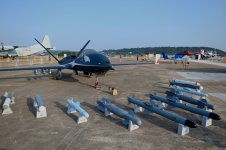

Specifications
General characteristics
Crew: None
Length: 9 m (29 ft 6 in)
Wingspan: 20 m (65 ft 7 in)
Height: 3.66 m (12 ft 0 in)
Empty weight: 2,300 kg (5,071 lb)
Max takeoff weight: 3,200 kg (7,055 lb)
Powerplant: 1 × WP-11C or ZF850 turbojet, 9.8 kN (2,200 lbf) thrust
Powerplant: 2 × AEF-50E turbofan, 4.90 kN (1,102 lbf) thrust each
Performance
Cruise speed: 620 km/h (390 mph, 330 kn)
Endurance: 20 hours
Service ceiling: 15,000 m (49,000 ft)
Armament
Missiles: Blue Arrow air-to-surface missile, light cruise missiles
Bombs: CS/BBM3 (YL-12) GPS guided bomb, GB-4 precision-guided bomb

The SC
INT'L MOD
- Feb 13, 2012
- 41,465
- 40,619
- Country of Origin

- Country of Residence

- Thread starter
- #222
Raytheon completes first AN/TPY-2 missile defense radar for the Kingdom of Saudi Arabia.

The AN/TPY-2 is a missile defense radar that can detect, track and discriminate ballistic missiles in multiple phases of flight.
This is the first AN/TPY-2 radar with a complete Gallium Nitride, or GaN, populated array in the system. GaN is a glasslike material that offers key advantages over other radio frequency semiconductors in energy efficiency, weight and power output. GaN technology provides greater sensitivity to increase range as well as expand surveillance capacity. This technology is also a key enabler in allowing the AN/TPY-2 radar to support the hypersonic mission.
AN/TPY-2 operates in the X-band of the electromagnetic spectrum. This enables it to see targets more clearly and distinguish between an actual threat to a defended area and non-threat objects, like separation debris. When operating in Terminal mode, AN/TPY-2 is directly in the fire control loop of the Terminal High Altitude Area Defense (THAAD) ballistic missile defense system through its direct communication with the THAAD missile.
https://www.rtx.com/news/news-cente...id=1370592802914765120597138&linkId=601262390
The world's most advanced radar, the AN/TPY-2, can operate in two modes:
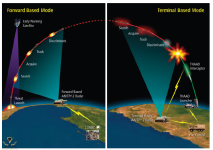
In Forward-based mode: The radar detects ballistic missiles after they are launched.
In Terminal-based mode: The radar helps direct interceptor missiles towards the threat to kill it..
And significantly, when operating in this mode the AN/TPY-2 radar drives the defense system In the high-altitude area by guiding the THAAD missile.
The AN/TPY-2 radar has flawless performance against all classes of ballistic missiles.

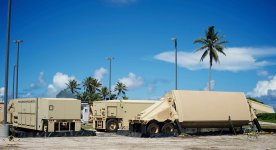
The Saudi deal includes:
7 THAAD batteries (44 launch platforms), each platform carries 8 missiles, with a total of 352 THAAD missiles ready for engagement with targets outside the atmosphere at a safe height and distance, in addition to 7 AN/TPY2 radars with GaN technology.
There is no official source that stated the range of the radar, neither from the US Army nor from Raytheon..
But the sources talk about a range of no less than 1000 km and up to 4000 km!
The Saudi version of the radar is the latest, with a greater range and better capabilities!
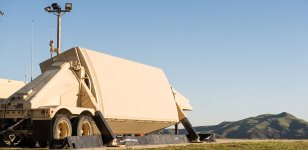
The best thing about it is that it works with Patriot Pack 3 and gives the Patriot battery enough early warning period.

The AN/TPY-2 is a missile defense radar that can detect, track and discriminate ballistic missiles in multiple phases of flight.
This is the first AN/TPY-2 radar with a complete Gallium Nitride, or GaN, populated array in the system. GaN is a glasslike material that offers key advantages over other radio frequency semiconductors in energy efficiency, weight and power output. GaN technology provides greater sensitivity to increase range as well as expand surveillance capacity. This technology is also a key enabler in allowing the AN/TPY-2 radar to support the hypersonic mission.
AN/TPY-2 operates in the X-band of the electromagnetic spectrum. This enables it to see targets more clearly and distinguish between an actual threat to a defended area and non-threat objects, like separation debris. When operating in Terminal mode, AN/TPY-2 is directly in the fire control loop of the Terminal High Altitude Area Defense (THAAD) ballistic missile defense system through its direct communication with the THAAD missile.
https://www.rtx.com/news/news-cente...id=1370592802914765120597138&linkId=601262390
The world's most advanced radar, the AN/TPY-2, can operate in two modes:

In Forward-based mode: The radar detects ballistic missiles after they are launched.
In Terminal-based mode: The radar helps direct interceptor missiles towards the threat to kill it..
And significantly, when operating in this mode the AN/TPY-2 radar drives the defense system In the high-altitude area by guiding the THAAD missile.
The AN/TPY-2 radar has flawless performance against all classes of ballistic missiles.


The Saudi deal includes:
7 THAAD batteries (44 launch platforms), each platform carries 8 missiles, with a total of 352 THAAD missiles ready for engagement with targets outside the atmosphere at a safe height and distance, in addition to 7 AN/TPY2 radars with GaN technology.
There is no official source that stated the range of the radar, neither from the US Army nor from Raytheon..
But the sources talk about a range of no less than 1000 km and up to 4000 km!
The Saudi version of the radar is the latest, with a greater range and better capabilities!

The best thing about it is that it works with Patriot Pack 3 and gives the Patriot battery enough early warning period.
The SC
INT'L MOD
- Feb 13, 2012
- 41,465
- 40,619
- Country of Origin

- Country of Residence

- Thread starter
- #224
The Border Guard, which is the Kingdom's first line of protection, monitors every approaching danger and repels intrusion attempts, and carries out its national responsibility to protect the Saudi borders.
The Border Guard performs many tasks around the clock, perhaps the most prominent of which is guarding the Kingdom’s land and sea borders, ports and maritime ports, combating smuggling and infiltration from inside and outside, providing early warning of any unusual movements on or near the border line, carrying out search, rescue and guidance operations, and providing assistance to marine media and marine firefighting. Monitoring all those present in the land and sea border area to ensure that they observe the rules and regulations established for this, controlling security within ports, seaports and land ports, and cooperating with official authorities within the scope of what is stipulated in the applicable regulations and what is required by the public interest within the border guard mission.
The Guard forces are deployed along the Kingdom’s maritime borders, whose length is estimated at 2,381 nautical miles, equivalent to 3,233 km.
Of these, 1,810 km along the Red Sea coast are divided into three regions:
- Northern Coastal Border Guard Base
- Central Border Guard Base
- Southern Border Guard Base
On the coast of the Arabian Gulf, which is 1,423 km long, there is one area:
- Border Guard Base in the Eastern Region
The regions have (121) coastal centers, a number of centers on some islands, and port security units consisting of (19) units.
The Coastal Border Guard also has two special forces units (the Special Maritime Border Security Force and the Marine Facilities Security and Protection Force).
Of these, 1,810 km along the Red Sea coast are divided into three regions:
- Northern Coastal Border Guard Base
- Central Border Guard Base
- Southern Border Guard Base
On the coast of the Arabian Gulf, which is 1,423 km long, there is one area:
- Border Guard Base in the Eastern Region
The regions have (121) coastal centers, a number of centers on some islands, and port security units consisting of (19) units.
The Coastal Border Guard also has two special forces units (the Special Maritime Border Security Force and the Marine Facilities Security and Protection Force).
The tasks of the force are:
1 - Dealing with terrorist incidents and confronting terrorists within the limits of the responsibilities of the border guards or maritime piracy operations and armed robbery on board maritime vessels.
2 - Security and protection of offshore islands and coastal centres.
3 - Support and assist border guard sector units when needed.
4 - Security and protection of vital installations that fall under the responsibility of the Border Guard upon request.
5 - Security and protection of VIP visitors, border guards and foreign delegations.
6 - Support other security units when the need arises.
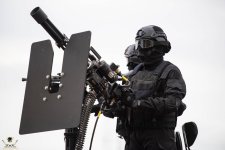
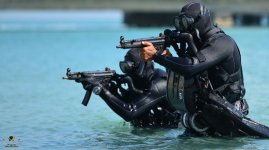
Marine vessels working for the Border Guard
Long range boat (CPV 60)
Number: (1) boat
Manufacturer: Laursen, Germany
Displacement: 700 tons
Length: 60 m
Range: 2780 km
Armament: 20 mm main gun, two 12.7 mm cannons

Training ship Tabuk
Number: (1)
Specialization: Training officers, non-commissioned officers, soldiers, and students of the Maritime Border Guard in all maritime specializations (navigation, surface, mechanics, electricity, electronics, refrigeration and air conditioning).
Displacement: 585 tons
Length: 60 m
Speed: 16 knots
Crew: 9 officers and 52 soldiers
Armament: 20 mm main gun and 2 12.7 mm cannons

Long Range Boat (OPB 40)
Number: (17) boats
Manufacturer: Laursen, Germany
Displacement: 200 tons
Length: 40 m
Speed: 32 knots
Range: 2700 km
Armament: 20 mm cannon, two 12.7 mm cannons
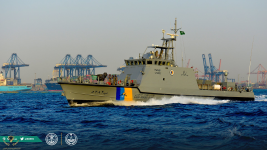
Long range boat (CPV 60)
Number: (1) boat
Manufacturer: Laursen, Germany
Displacement: 700 tons
Length: 60 m
Range: 2780 km
Armament: 20 mm main gun, two 12.7 mm cannons

Training ship Tabuk
Number: (1)
Specialization: Training officers, non-commissioned officers, soldiers, and students of the Maritime Border Guard in all maritime specializations (navigation, surface, mechanics, electricity, electronics, refrigeration and air conditioning).
Displacement: 585 tons
Length: 60 m
Speed: 16 knots
Crew: 9 officers and 52 soldiers
Armament: 20 mm main gun and 2 12.7 mm cannons

Long Range Boat (OPB 40)
Number: (17) boats
Manufacturer: Laursen, Germany
Displacement: 200 tons
Length: 40 m
Speed: 32 knots
Range: 2700 km
Armament: 20 mm cannon, two 12.7 mm cannons

The SC
INT'L MOD
- Feb 13, 2012
- 41,465
- 40,619
- Country of Origin

- Country of Residence

- Thread starter
- #225
Long-range boat (Al-Jawf) class
Number: (4) boats
Manufacturer: Germany
Displacement: 210 tons
Length: 38 m
Speed: 38 knots
Range: 3500 km
Armament: two 20 mm cannons, two 12.7 mm cannons
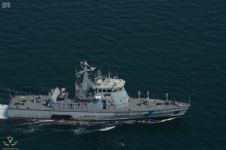
Badr class long-range boat
Number: (3) boats
Manufacturer: United States
Length: 29 m
Speed: 25 knots
Range: 3000 km
Armament: 20 mm cannon, 2 12.7 mm cannons
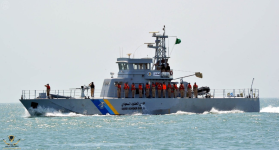
Long range boat (CGV-26 class)
Number: (7) boats
Manufacturer: Germany
Length: 26.6 m
Speed: 34 knots
Armament: 20 mm cannon, 2 12.7 mm cannons
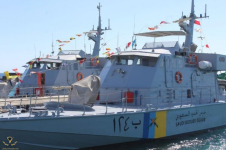
Long range boat (StanPatrol 2606)
Number: (9) boats
Manufacturer: Damen, Netherlands
Displacement: 55 tons
Length: 26.5 m
Speed: 30 knots
Range: 2030 km
Armament: 3 12.7 mm cannons
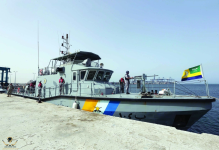
Mid-range class boat SCORPION
Number: (25) boats
Manufacturer: Germany
Length: 17.1 m
Speed: 25 knots
Range: 375 km
Armament: 2 12.7 mm cannons
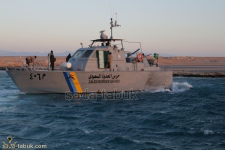
Long range patrol boat (Sea Guard SM742)
Number: (7)
Manufacturer: France
Length: 22.5 m
Speed: 35 knots
Range: 2250 km
Armament: 3 12.7 mm cannons

Number: (4) boats
Manufacturer: Germany
Displacement: 210 tons
Length: 38 m
Speed: 38 knots
Range: 3500 km
Armament: two 20 mm cannons, two 12.7 mm cannons

Badr class long-range boat
Number: (3) boats
Manufacturer: United States
Length: 29 m
Speed: 25 knots
Range: 3000 km
Armament: 20 mm cannon, 2 12.7 mm cannons

Long range boat (CGV-26 class)
Number: (7) boats
Manufacturer: Germany
Length: 26.6 m
Speed: 34 knots
Armament: 20 mm cannon, 2 12.7 mm cannons

Long range boat (StanPatrol 2606)
Number: (9) boats
Manufacturer: Damen, Netherlands
Displacement: 55 tons
Length: 26.5 m
Speed: 30 knots
Range: 2030 km
Armament: 3 12.7 mm cannons

Mid-range class boat SCORPION
Number: (25) boats
Manufacturer: Germany
Length: 17.1 m
Speed: 25 knots
Range: 375 km
Armament: 2 12.7 mm cannons

Long range patrol boat (Sea Guard SM742)
Number: (7)
Manufacturer: France
Length: 22.5 m
Speed: 35 knots
Range: 2250 km
Armament: 3 12.7 mm cannons

Users who are viewing this thread
Total: 2 (members: 0, guests: 2)
Pakistan Defence Latest
Country Watch Latest
-
-
New Chinese nuclear attack submarine sank during construction, US defense official says (16 Viewers)
- Latest: Deino
-
-
-
Latest Posts
-
-
China’s newest nuclear-powered submarine sank earlier this year, US officials say: CNN (8 Viewers)
- Latest: F-22Raptor
-
Hezbollah-Israel Conflict 2024 - Lebanon & Occupied Palestine Territories (17 Viewers)
- Latest: 925boy
-
-
New Chinese nuclear attack submarine sank during construction, US defense official says (16 Viewers)
- Latest: Deino





